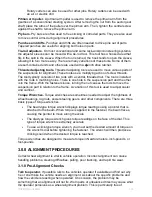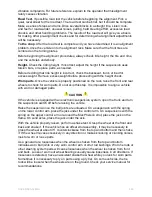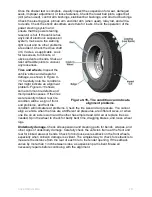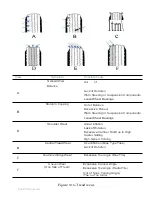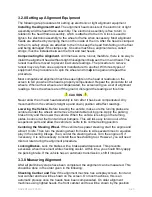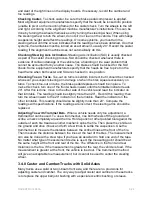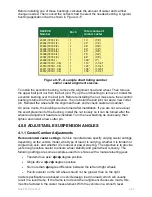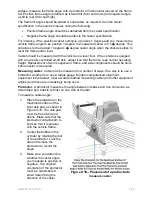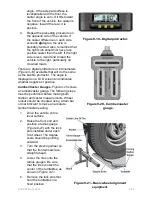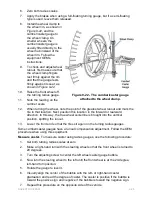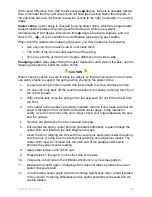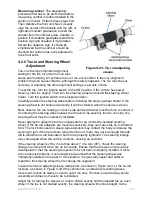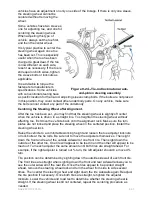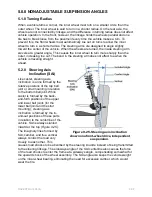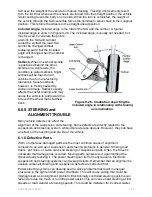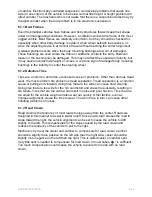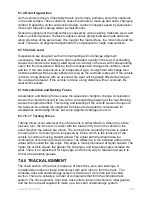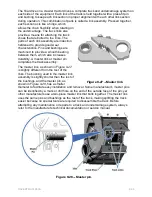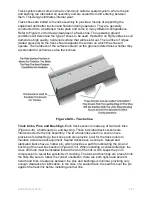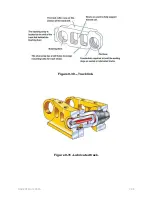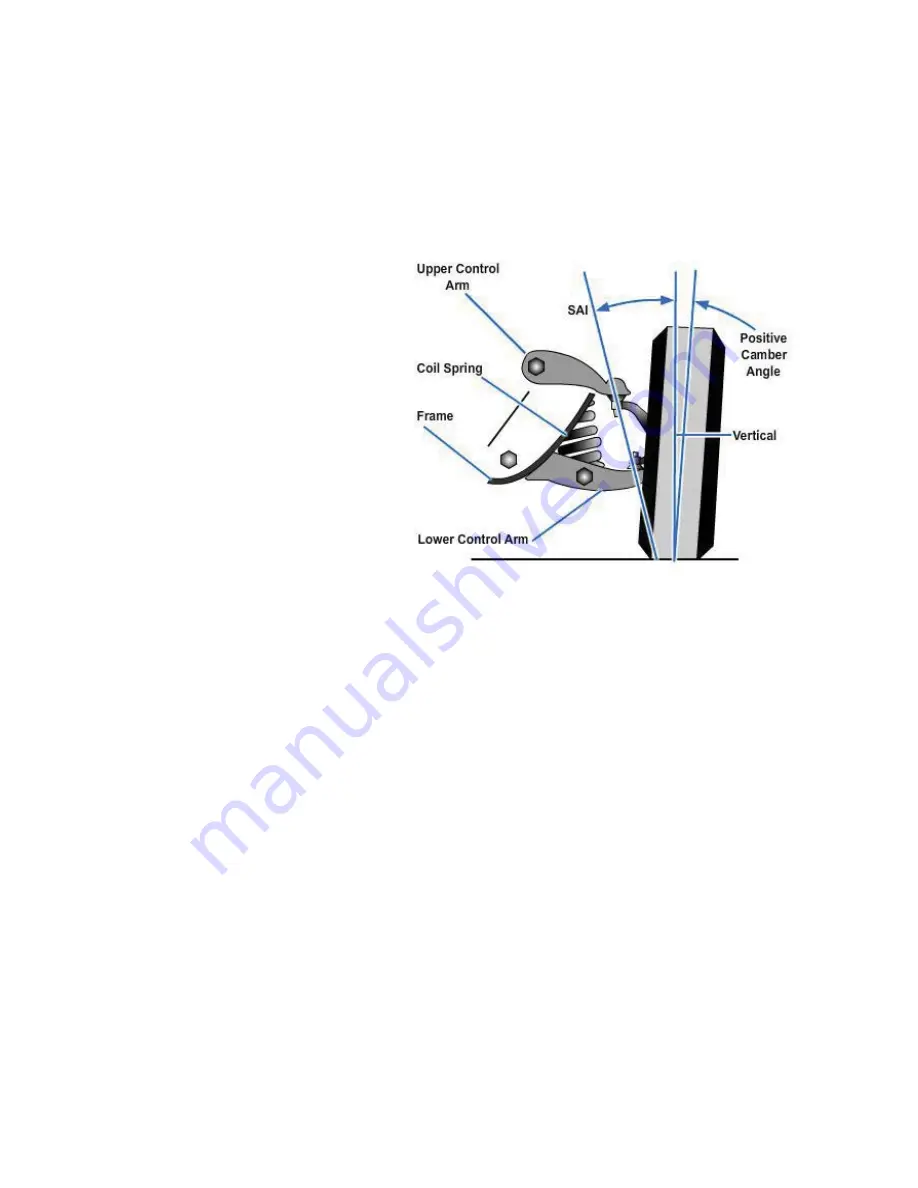
SAI uses the weight of the vehicle to improve tracking. Tracking improvements result
from the fact that whenever the wheels are turned from the straight position, the vehicle
caster setting raises the body on one side. When the turn is completed, the weight of
the vehicle through the SAI centerline forces the spindles to swivel back to their original
position. This returns the wheels to the straight-ahead position.
Included Angle.
Included angle is the total of the SAI and the camber. A typical
included angle is shown in
Figure 9-26
. The included angle is usually not needed, but
may be used to calculate the points
at which the SAI and camber
centerline contact the road. SAI
cannot be changed without
replacing parts, but the included
angle will change when the camber
is changed.
Setback.
When one wheel spindle
is positioned behind the other
spindle on a single axle, the
condition is called setback. Slight
setback will be found on all
vehicles due to manufacturing
tolerances. Severe setback,
however, is mostly caused by
collision damage. Setback usually
affects the caster reading and may
cause the vehicle to pull toward the
side with the wheel that is farthest
back.
6.0.0 STEERING and
ALIGNMENT TROUBLE
Figure 9-26 - Illustration depicting the
included angle in relationship with steering
axis inclination.
Many vehicle defects can affect the
alignment of the suspension and steering. Some defects are directly related to the
suspension and steering system, while others are less obvious. However, they can have
an effect on the handling and tire life of the vehicle.
6.1.0 Defective Parts
Worn or otherwise damaged parts are the most common cause of alignment
complaints, as well as of suspension and steering problems in general. Striking road
debris, pot holes, or curbs can bend steering or suspension parts. Often, the driver is
not aware that damage has occurred. Moving parts can wear out, again without the
driver actually realizing it. The power steering can fail for many reasons. Electronic
suspension and steering systems can develop defects. Remember that an alignment is
useless unless all steering and suspension defects are corrected first.
Power steering systems can develop seal or valve problems that result in unequal
pressures in the right and left power chambers. This will cause pulling that could be
misdiagnosed as an alignment problem. Electronically controlled steering systems can
fail and provide too much or too little power assist. This can cause hard steering at low
speeds or road wander at cruising speeds. This could be mistaken for incorrect caster
NAVEDTRA 14050A
9-33

